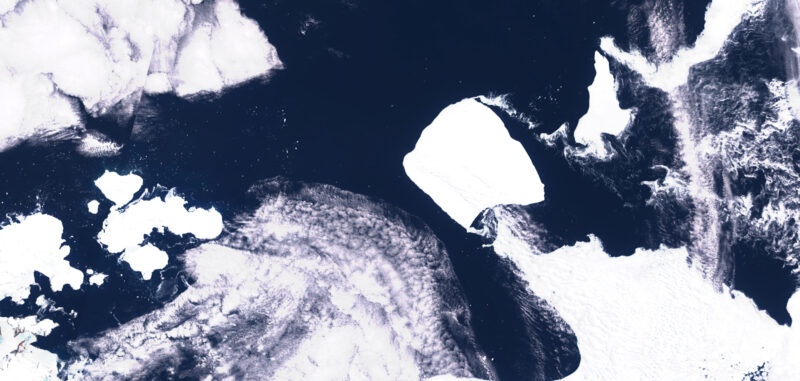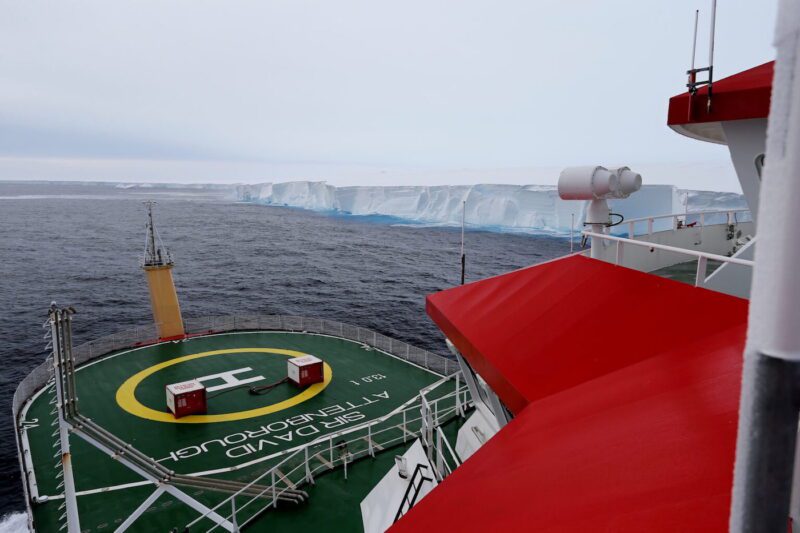U.S. Customs Revenue Tops $100 Billion for First Time Amid Tariff Surge
US revenue from customs duties this fiscal year surpassed $100 billion for the first time, reflecting higher tariffs imposed by the Trump administration.

The RRS Sir David Attenborough, the UK’s polar research vessel, recently had a close encounter with the A23a mega iceberg, the largest iceberg in the world.
The enormous iceberg, spanning approximately 3,900 square kilometers and towering 400 meters tall, was captured on video as it stretched out into the distance beyond the research vessel.
“It is incredibly lucky that the iceberg’s route coincided with our planned path, and that we had the right team aboard to take advantage of this opportunity,” said Dr. Andrew Meijers, Chief Scientist aboard the RRS Sir David Attenborough and Polar Oceans Science Leader at the British Antarctic Survey (BAS). “We’re fortunate that navigating A23a hasn’t affected our tight science mission schedule, and it is amazing to witness this massive iceberg in person – it stretches as far as the eye can see.”
The A23a iceberg made global headlines last month after it moved from the Weddell Sea sector into the Southern Ocean. Originating from the Filchner Ice Shelf in 1986, the iceberg eventually became grounded, but it is now expected to be carried along by the Antarctic Circumpolar Current towards ‘iceberg alley,’ putting it on a common trajectory towards the sub-Antarctic island of South Georgia.

The RRS Sir David Attenborough happened to encounter the iceberg during its planned route towards the Weddell Sea, where scientists will begin the first scientific mission aboard the new research ship. The cruise aims to investigate how Antarctic ecosystems and sea ice contribute to global ocean cycles of carbon and nutrients.

Scientists aboard the research vessel seized the opportunity to collect seawater samples around the massive iceberg.
Laura Taylor, a biogeochemist involved in the research, highlighted the significance of studying the A23a samples. “We know that these giant icebergs can enrich the waters they pass through, creating thriving ecosystems in less productive areas,” said Taylor. “However, we still have much to learn about the specific effects of particular icebergs, their size, and their origins on this process. The samples we collected will help us understand the potential life forms around A23a and how this iceberg, along with others like it, influences carbon dynamics in the ocean and its balance with the atmosphere.”
The RRS Sir David Attenborough, operated by the British Antarctic Survey, is known as one of the most advanced polar research vessels globally. The ship gained widespread attention during its construction when an online contest overwhelmingly voted to name it “Boaty McBoatface.”

Sign up for gCaptain’s newsletter and never miss an update

Subscribe to gCaptain Daily and stay informed with the latest global maritime and offshore news


Stay informed with the latest maritime and offshore news, delivered daily straight to your inbox
Essential news coupled with the finest maritime content sourced from across the globe.
Sign Up